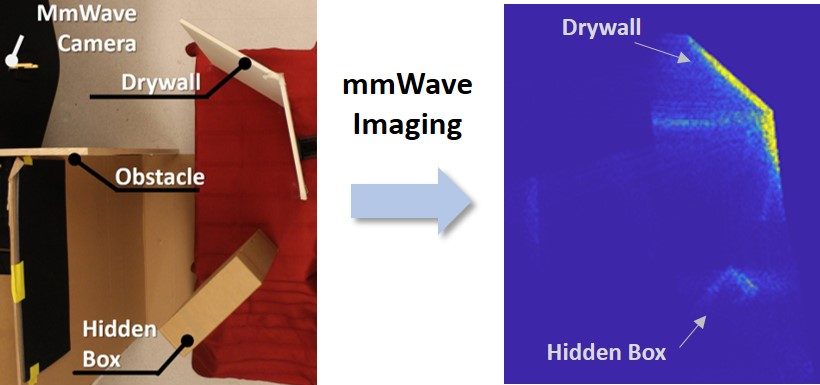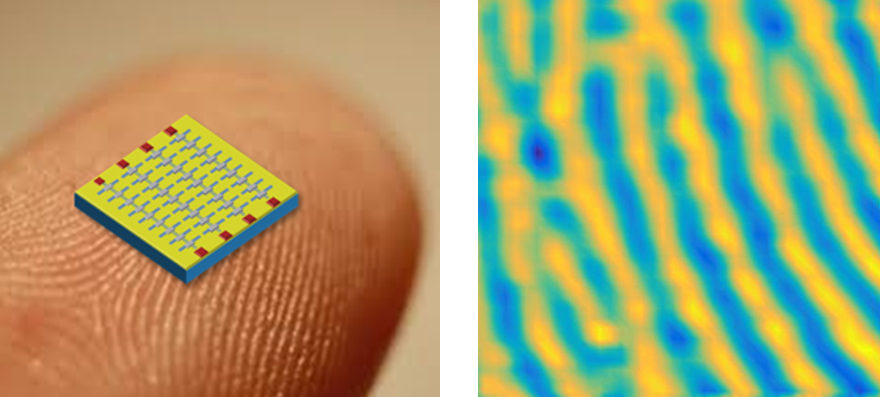What new imaging and sensing opportunities can millimeter and THz waves enable? mm/THz waves are non-ionizing (safe for humans), can penetrate most non-conducting materials (e.g. plastic, wood) and due to the small wavelengths and large bandwidths, they can form high-resolution images. The unique properties of mmWaves/THz allow us to see and detect objects that we cannot observe with traditional methods using microwaves or optical signals.
Seeing Around Corners

Can we see around obstacles from a single viewpoint? We are using millimeter/THz waves to augment vision to non-line-of-sight (NLoS) areas. By understanding the interaction of THz waves with common building surfaces, we can inverse the propagation path and reconstruction images of both LoS and NLoS objects. Being able to see around obstacles will enable applications in rescue and surveillance missions, autonomous navigation, simultaneous localization and mapping, and wireless communications.
Funding source: NSF Award 1847138 (CAREER)
Augmenting Vision with mmWave/THz Radar Imaging

Augmented Reality (AR) and millimeter waves (mmWaves) are combined to augment our visual perception. Using an AR and a mmWave camera the user can see around corners from a distance. The hidden objects from the mmWave camera are projected on the real-world using Magic Leap One. To visualize the hidden objects, we convert the appropriate surface into mirrors based on the information from the mmWave camera.
Funding source: NSF Award 1847138 (CAREER)
This is simple example of how augmented reality can help humans visualize radar images. In this example developed by a senior design team, the user is walking down a corridor with his AR goggles (Magic Leap One). The goggles are superimposing the data that came from a mmWave imager (low resolution), such that the user can see around the corner at the end of the aisle. The hidden mannequin can then be seen by looking through a virtual mirror projected on one of the nearby walls.
THz Fingerprint Scanners for Advanced Security Biometrics

Terahertz (THz) waves (0.1-10 THz) can penetrate the human skin while providing high quality images due to the small wavelengths. Although, terahertz waves’ penetration in human tissue has been viewed as a limiting factor for medical imaging applications, it has been shown that it can still propagate several micrometers into the skin . The skin layers of interest in terahertz biometrics are the top two thin skin layers (<500 μm combined) stratum corneum (SC) and epidermis that exhibit relatively low absorption in the sub-THz band. The dermis is a much thicker skin layer situated below the epidermis and exhibits considerably higher absorption. The top skin layers feature a topology wealthy of traits that terahertz waves could identify and could then be used to unique characterize an individual’s fingerprint with improved security layer. Additionally, it is important to understand the electromagnetic interaction of THz waves with the complex topology of the human skin that will allow us to interpret properly the THz images.
Funding Source: Qualcomm Inc.

